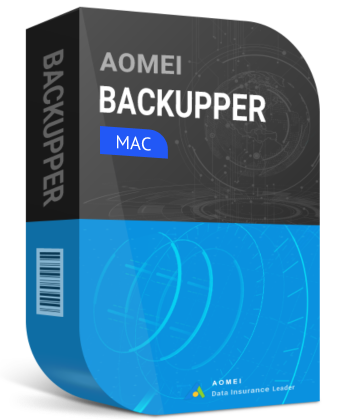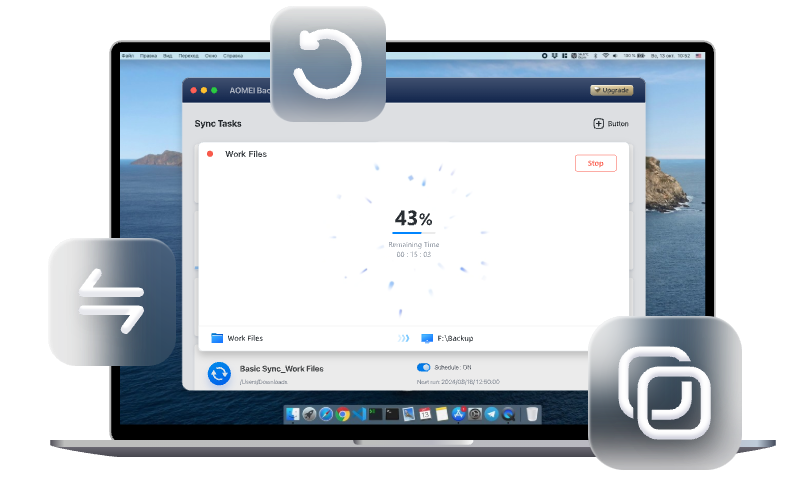The Ultimate Guide to File Sync for Mac Data Management
This article delves into the intricacies of file sync for Mac, providing detailed insights and solutions for maintaining data consistency across multiple devices. It explores various synchronization methods, offering step-by-step guides for effective file syncing.
Introduction
In the digital age, file sync for Mac is essential for ensuring your data remains consistent and accessible across all your devices. Whether for personal use or professional tasks, maintaining seamless data synchronization can significantly enhance productivity and data security. This guide explores various methods and tools to achieve efficient file sync on Mac, ensuring you never miss a beat in your digital life.
Why is File Sync for Mac Important?
File synchronization for Mac is essential for several reasons:
⚡ Data Protection: Synchronizing files ensures that your data is consistently backed up and protected. If your primary device fails, you can retrieve your data from the synced location, minimizing data loss.
⚡Accessibility: File sync allows you to access your files from multiple devices seamlessly. Whether you're at home, at work, or on the go, having synchronized files means you can always get to the documents you need.
⚡Collaboration: For teams and groups, file sync ensures that everyone has the most up-to-date version of documents. This is particularly important for collaborative projects where multiple people need to edit and review the same files.
⚡Security: Many sync solutions offer encrypted transfers, ensuring that your data remains secure during the sync process. This is particularly important for sensitive information that requires a high level of security.
⚡Ease of Use: Modern file sync software is designed to be user-friendly, making it easy to set up and manage synchronization tasks. This simplicity helps ensure that users can take full advantage of the benefits without needing extensive technical knowledge.
By understanding file synchronization, Mac users can enhance their data management, improve collaboration, and ensure their information is always up-to-date and secure.
Top Solutions for File Sync on Mac
Solution 1: How to Sync Files Using iCloud Drive
iCloud Drive is a built-in feature of macOS that allows you to sync folders across all your Apple devices. This means you can access your documents, photos, and other files from your Mac, iPhone, iPad, and even Windows PC. With iCloud Drive, any changes you make to a file on one device are automatically updated on all your other devices, ensuring you always have the most up-to-date version of your files wherever you are.
To sync two folders using iCloud Drive on a Mac, follow these steps:
1. Enable iCloud Drive: Go to System Preferences > Apple ID > iCloud. And check the box for iCloud Drive.
2. Select Folders for Sync: Click on Options next to iCloud Drive. Choose the folders and apps you want to sync.
3. Organize Files: Drag and drop files into the iCloud Drive folder in Finder.
4. Access Files on Other Devices: Ensure iCloud Drive is enabled on your iPhone, iPad, or other Macs.
5. Monitor Sync Status: Check the sync status by clicking on the iCloud icon in Finder.
Solution 2: How to Sync Files on Mac Using Google Drive
Google Drive is a popular cloud service that offers effortless folder syncing across various devices, including Macs. This feature makes it easy to keep your files accessible and up-to-date, no matter where you are. It provides comprehensive file synchronization with generous storage options.
Steps:
1. Download Google Drive: Install the Google Drive app from the official website.
2. Sign In: Sign in with your Google account.
3. Sync Preferences: Choose which folders to sync during the setup process.
4. Upload Files: Drag and drop files into the Google Drive folder in Finder.
5. Access and Edit: Use Google Drive on your other devices to access and edit your files.
Solution 3: Using Third-Party Application to Sync Files on Mac
Maintaining data integrity is crucial when synchronizing your files. AOMEI Backupper Mac offers a top-notch solution for both backing up and syncing your data. Its user-friendly interface combined with robust features makes it simple to safeguard your files. With AOMEI Backupper, you can synchronize your data reliably and efficiently, ensuring that your information remains secure at all times.

- Easy Mac Syncing: Keep all your files on a Mac in sync effortlessly, ensuring complete data protection.
-
Multiple Sync Options: Choose from Basic Sync, Mirror Sync, or Two-Way Sync to suit your specific needs.
-
Flexible Sync Destinations: Sync your files to various storage options, including local storage, cloud services, NAS devices, external hard drives, USB drives, SD cards, and more.
-
Fast and Secure Syncing: Benefit from rapid file synchronization with advanced technology, ensuring your data is encrypted and secure throughout the process.
Step 1: Get the AOMEI Backupper Mac software and install it on your Mac. Tap New Task to start the task.
Step 2: Choose the type of synchronization that suits your needs. Mirror Sync or Two-Way Sync is a good choice for synchronizing tasks between two folders.
Basic Sync: This method copies files from one location to another without removing the originals from the source.
Mirror Sync: This approach creates an exact replica of the source files at the destination, including removing any files at the destination that are no longer present in the source.
Two-Way Sync: This ensures that files in both the source and destination locations are updated, reflecting changes in either location in the other.
Step 3: Choose the sync source and destination.
Step 4: You can adjust sync schedules and options.
You can choose how often to synchronize your files, with options including once, hourly, daily, weekly, or monthly. Additionally, you can set a specific start time and decide whether the system should hibernate or shut down after the sync process is complete.
Under the Options menu, you can tailor the sync process by including or excluding specific files and folders.
Step 5: Once all settings are configured, click the "Sync" button and wait for the process to finish.
Frequently Asked Questions
Q 1: How do I set up file sync on my Mac?
A 1: Setting up file sync on your Mac can be done using built-in features like iCloud Drive, or third-party services such as Dropbox and Google Drive. Enable the service, select the folders to sync, and ensure all your devices are configured to access the same service.
Q 2: How can I ensure my files are always synced across my devices?
A 2: Enable automatic synchronization in your chosen file sync service, ensure a stable internet connection, and regularly check the sync status to verify data consistency.
Q 3: How can I automate file sync on my Mac?
A 3: Enable automatic sync settings in your file sync service. Use scheduled tasks or third-party automation tools to initiate sync processes at regular intervals.
Practical Tips for Efficient File Sync on Mac
- Regularly Update Software: Keep your file sync tools and macOS updated to ensure compatibility and security.
- Monitor Sync Status: Regularly check the sync status indicators to verify that your files are up-to-date.
- Optimize Internet Connection: Ensure a stable and fast internet connection to facilitate smooth synchronization processes.
Conclusion
File sync for Mac is a vital aspect of modern data management, ensuring your files remain consistent and accessible across all your devices. By utilizing built-in features like iCloud Drive and third-party tools such as Dropbox and Google Drive, you can achieve seamless synchronization and enhance your productivity. Tools like AOMEI Backupper offer additional benefits, providing comprehensive backup and synchronization solutions. Embrace these practices and tips to optimize your digital experience and ensure your data is always at your fingertips.

